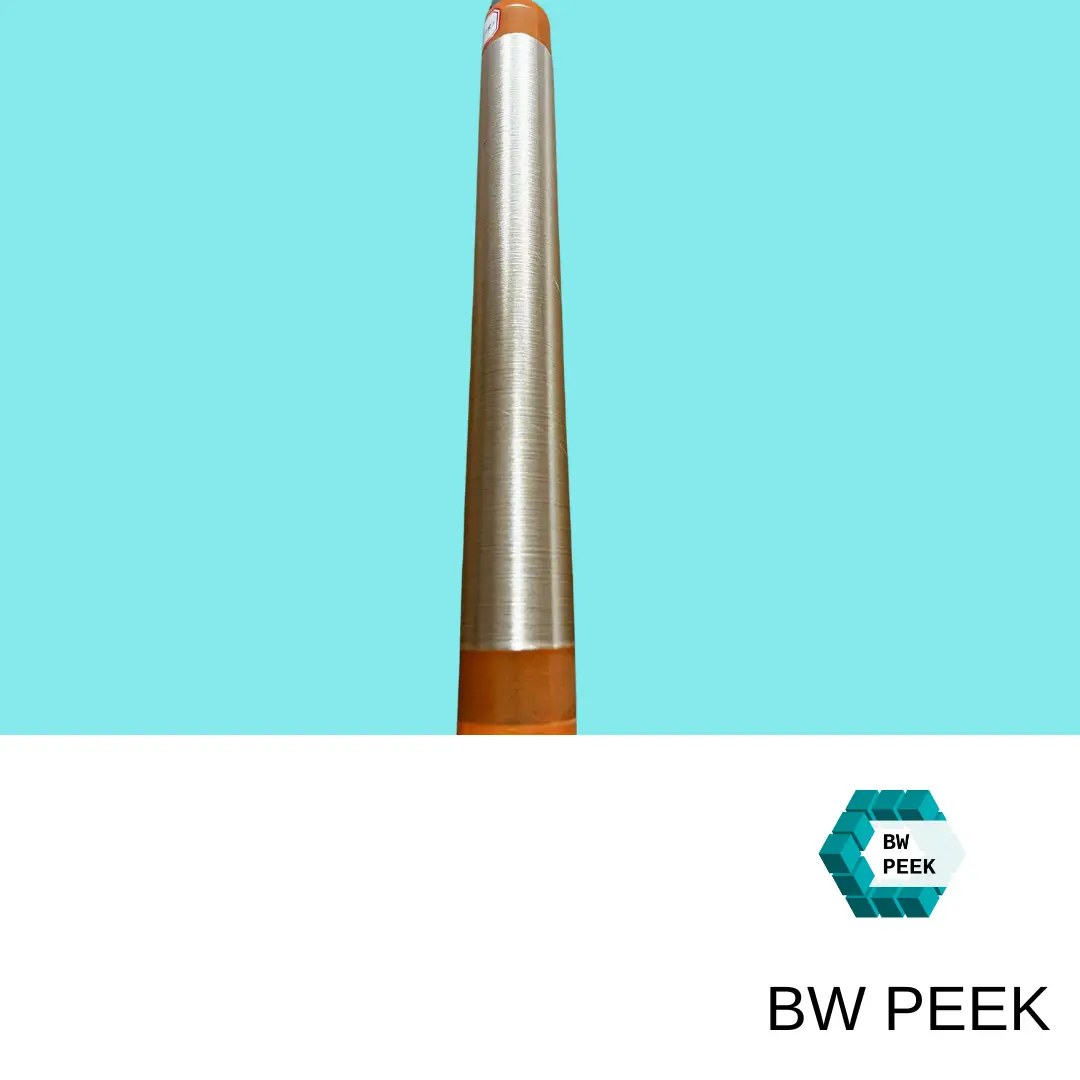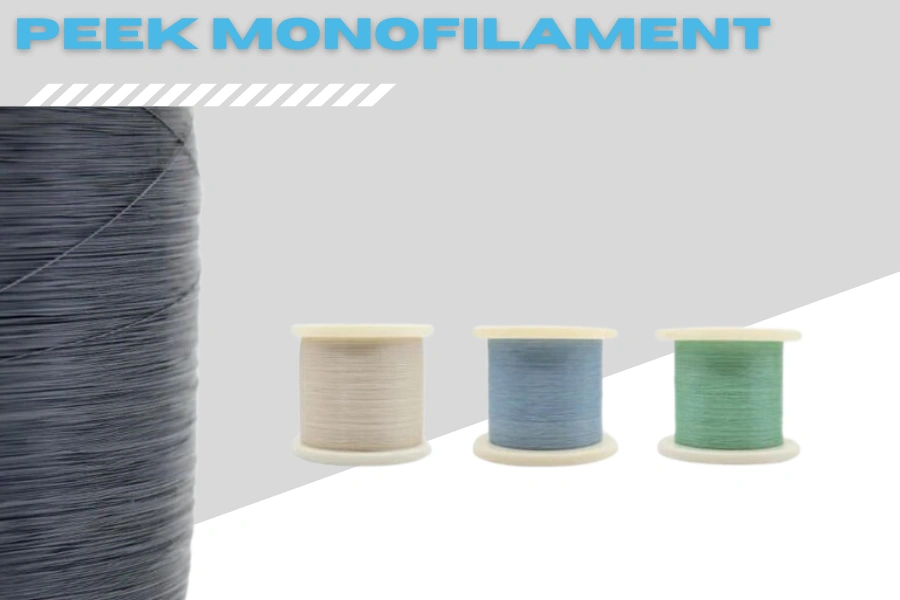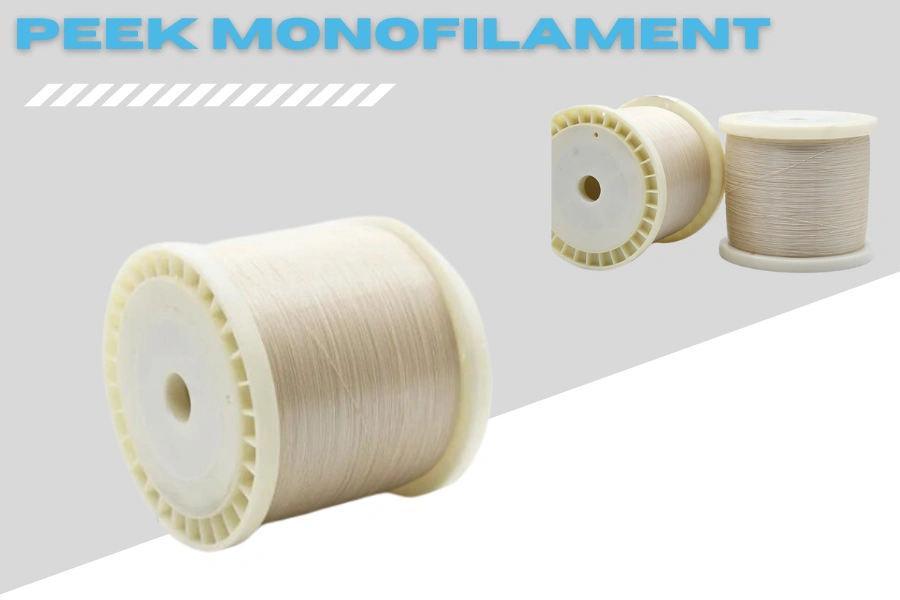




| PEEK Monofilament Specification | |||
|---|---|---|---|
| Diameter(mm) | Tolerance Diameter(mm) | Breaking Strength(cN/dTex) | Elongation rate(%) |
| Φ0.06 | ±0.003 | ≥3.0 | 20~40 |
| Φ0.07 | ±0.003 | ≥3.0 | 20~40 |
| Φ0.10 | ±0.03 | ≥3.0 | 20~40 |
| Φ0.15 | ±0.03 | ≥3.0 | 20~40 |
| Φ0.20 | ±0.03 | ≥3.0 | 20~40 |
| Φ0.25 | ±0.03 | ≥3.0 | 20~40 |
| Φ0.28 | ±0.03 | ≥3.0 | 20~40 |
| Φ0.30 | ±0.03 | ≥3.0 | 20~40 |
| Φ0.35 | ±0.03 | ≥3.0 | 20~40 |
| Φ0.38 | ±0.03 | ≥3.0 | 20~40 |
| Φ0.40 | ±0.03 | ≥3.0 | 20~40 |
| Φ0.45 | ±0.03 | ≥3.0 | 20~40 |
| Φ0.50 | ±0.03 | ≥3.0 | 20~40 |
| Φ0.55 | ±0.03 | ≥3.0 | 20~40 |
| Φ0.60 | ±0.03 | ≥3.0 | 20~40 |
| Φ0.70 | ±0.03 | ≥3.0 | 20~40 |
| Φ0.80 | ±0.03 | ≥3.0 | 20~40 |
| Φ0.90 | ±0.03 | ≥3.0 | 20~40 |
| Φ1.00 | ±0.03 | ≥3.0 | 20~40 |
Color: natural, black, blue, purple, green, red, orange, pink, yellow
Customized colors and sizes are acceptable.
Performance
PEEK monofilament are vapor, abrasion, creep, toughness and biocompatible for applications requiring very high mechanical, thermal and chemical properties.
Packaging
Monofilaments are supplied on flanged spools as standard.
2.Braided pipe sleeve liner
Commonly used 0.2-0.3mm monofilament braided, role: to protect the harsh environment of the wire, electronic circuits;
Sutures and ligaments: excellent recovery performance and high energy absorption makes PEEK fiber suitable for use as medical sutures and ligament materials, as well as other rope and string products;
Ropes: composite filaments are made into ropes, which are used as reinforcements for filtration fabrics and tapes;
Other applications:
Drying canvas for paper-making machinery, heat-resistant filter fabrics, netting for racquets, composite materials (blended or mixed with carbon fibers, glass fibers, etc.), fuel filters, artificial ligaments, and high-temperature insulating sheaths on aircraft.
PEEK compounds 125 dtex to 1230 dtex PEEK compounds are delivered on plain carton reels or flanged reels.
Standard products are 550 dtex and 1230 dtex with 30 or 72 filaments.
peek multifilaments have much higher resistance to heat, friction and corrosion than conventional fibers.
| Size(D/F) | Tolerance(D) | Breaking Strength(cN/dTex) | Elongation rate(%) |
|---|---|---|---|
| 150D/30F | ±20 | ≥3.0 | 20~40 |
| 200D/30F | ±20 | ≥3.0 | 20~40 |
| 250D/60F | ±20 | ≥3.0 | 20~40 |
| 300D/60F | ±20 | ≥3.0 | 20~40 |
| 400D/60F | ±20 | ≥3.0 | 20~40 |
| 450D/60F | ±20 | ≥3.0 | 20~40 |
| 500D/120F | ±20 | ≥3.0 | 20~40 |
| 600D/120F | ±40 | ≥3.0 | 20~40 |
| 800D/120F | ±60 | ≥3.0 | 20~40 |
| 900D/120F | ±60 | ≥3.0 | 20~40 |
| 1000D/120F | ±60 | ≥3.0 | 20~40 |
Hybrid composites for structural components for aerospace and weaponry applications.
Braided sheaths for aerospace high-performance wires and cables, as well as dry canvas for paper machines, heat-resistant filter fabrics and heat- and corrosion-resistant textile tapes for the civil sector.
Blended yarns or for blended fabrics.
Radiation-resistant, flame-retardant specialty workwear;
Flame-retardant, waterproof, UV and anti-aging utility tents;
Electromagnetic shielding flexible materials (electromagnetic shielding nets and fabrics);
Heat-insulating thermal blankets.




















